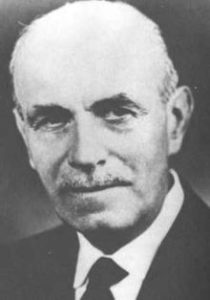In March of 1918 a story appeared in the pages of Detective Story Magazine and the author of the story was Seabury Quinn. The title of the story was “Demons of the Night”.
As near as we can tell, “Demons of the Night” was Quinn’s first fiction sale. That sale began a fiction writing career that spanned over half a century, and saw the production of over 500 short stories and 2 novels. And those numbers don’t include his many non-fiction writings.
Seabury Quinn was the quintessential pulp fiction master, along with such greats as H. Bedford-Jones, Erle Stanley Gardner, and Robert E Howard. He knew how to craft a story that would sell and he wasn’t shy about going where the money was to be found.
In his day, Quinn was an exceedingly popular author. A Weird Tales poll of the magazine’s readers put Quinn as their number one favorite author — ahead of such luminaries as HP Lovecraft, Robert E Howard, and August Derleth. More Seabury Quinn stories received cover art than any other writer for Weird Tales. As I noted in another post, it was Quinn and his creation, Jules de Grandin, who saved Weird Tales from folding in the early ‘30s, which would have possibly denied us the best of Lovecraft’s work, and such talents as Robert Bloch.
So why is Seabury Quinn denied his claim to fame and basically relegated to a footnote? The answer lies with the politics of the Lovecraft Circle, specifically the machinations of August Derleth.
In order to elevate Lovecraft, Seabury Quinn became the whipping boy. Quinn was a hack and the epitome of what was bad in pulp magazine fiction. Lovecraft, on the other hand, was a genius and represented the highest ideals and possibilities of the pulp magazines. Derleth’s hero worship put the knife in Quinn’s back. And why Quinn, and not someone else? Probably because Lovecraft didn’t like Quinn’s fiction, making him an easy target.
For a long time I held to the common, albeit unfair, assessment that Quinn was a hack. I held that view until I actually read some of his stories. Much to my surprise, his stories are no worse than Lovecraft’s, or Howard’s, or Frank Belknap Long’s, to name three, and in some cases better.
Seabury Quinn was a decent, prolific, and inventive writer, much like Robert E Howard. Quinn was paid more than the other writers for Weird Tales because the magazine’s readers wanted his stories.
Now, thanks in large part to ebooks, publishers are republishing the work of Seabury Quinn, and I am very pleased to see him regaining the recognition he is due.
Yesterday, for Christmas, I received two volumes of Quinn’s work: Demons of the Night and Other Early Tales, edited by Gene Christie and published by Black Dog Books; and A Rival from the Grave, The Complete Tales of Jules de Grandin, Volume 4, edited by George A Vanderburgh and published by Nightshade Books. Santa was indeed good!
In short order, Seabury Quinn has become one of my favorite authors. His books stand right next to the works of Lovecraft and Howard. He’s easily their equal. Sure, he’s different from them. But that doesn’t make him a lesser writer. Seabury Quinn’s stories have immense entertainment value. What more can one ask from a writer?
As always, comments are welcome; and, until next time, happy reading!
Share This!